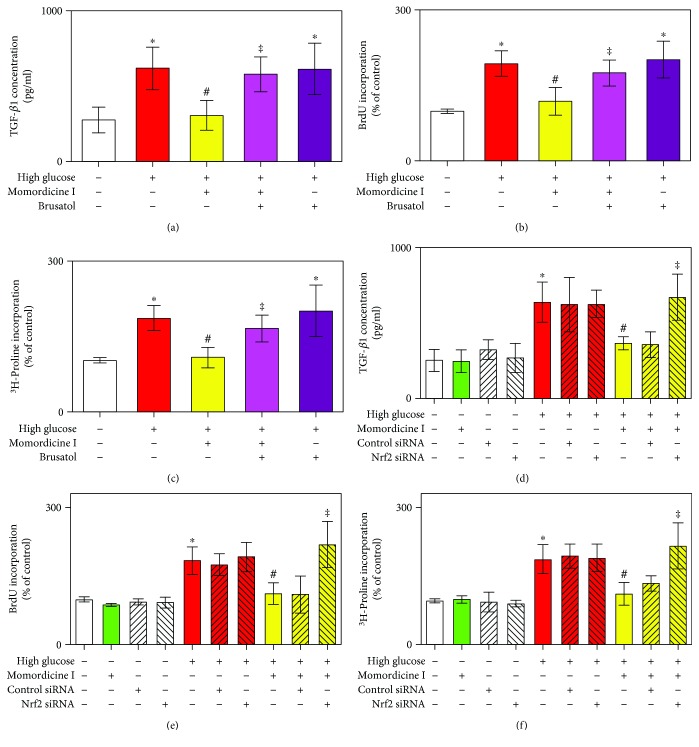Figure 5.
Momordicine I inhibits high-glucose-induced TGF-β1 secretion, cell proliferation, and collagen synthesis in rat cardiac fibroblasts in an Nrf2-dependent manner. (a) The Nrf2 inhibitor brusatol prevents the inhibitory effect of momordicine I on high-glucose-induced TGF-β1 secretion. Results are expressed as means ± SEM (n = 4). (b) Brusatol prevents the inhibitory effect of momordicine I on high-glucose-induced cell proliferation. Results are expressed as means ± SEM (n = 4). (c) Brusatol prevents the inhibitory effect of momordicine I on high-glucose-induced collagen synthesis. Cells were treated with brusatol (10 nM) for 30 min, followed by 1 μM momordicine I for 12 h, and were subsequently cultured in high-glucose medium for 24 h. Results are expressed as means ± SEM (n = 4). (d) Nrf2 siRNA prevents the inhibitory effect of momordicine I on high-glucose-induced TGF-β1 secretion. Results are expressed as means ± SEM (n = 3). (e) Nrf2 siRNA prevents the inhibitory effect of momordicine I on high-glucose-induced cell proliferation. Results are expressed as means ± SEM (n = 3). (f) Nrf2 siRNA prevents the inhibitory effect of momordicine I on high-glucose-induced collagen synthesis. Results are expressed as means ± SEM (n = 3). ∗P < 0.05 compared with the control group; #P < 0.05 versus the high-glucose group; ‡P < 0.05 versus momordicine I treatment in the high-glucose group.

